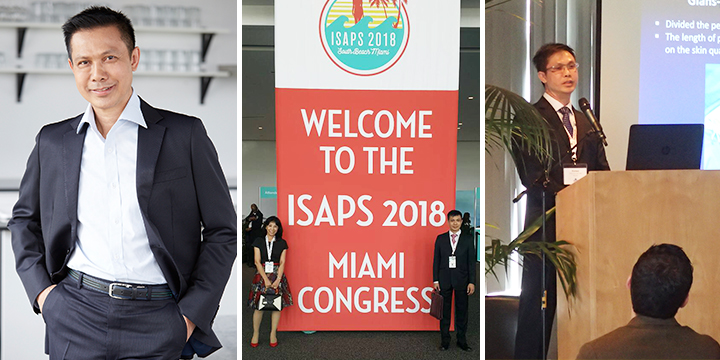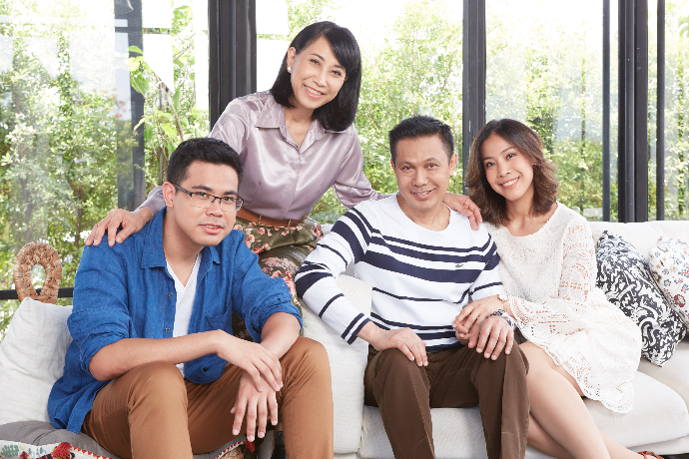
When we recently sat down to talk with Dr. Kamol Pansritum about his life and work, it was a sultry early Sunday afternoon. Bangkok's rainy season had just begun. But when Dr. Kamol walked in, he looked fresh and cool. It reflected the character of this world famous plastic surgeon, whose pioneering surgical techniques and methods have made him one of the most sought after gender confirmation surgeons across the globe.
As a rule Dr. Kamol usually sets aside Sunday as a day to spend with his family, a quiet time to relax from the full schedule of surgeries and treatments he performs during the week. This particular Sunday was different, however, because he had agreed to give a glimpse into how he came to establish his hospital and work with patients and staff he has come to regard as a family, too.
If you're getting the impression family means a great deal to him, you're right. He works closely with his wife, Siripen, who designed and now manages the hospital. And aside from his immediate family in Bangkok, there was the influence of his parents and brothers and sisters when growing up.
Kamol comes from a small village in Nong Khai province, located along the Mekong River and just across the border from Vientiane, Laos. His father was a school teacher. His younger brother became an engineer, while one of his sister's became a nurse and another went on to manage her family's work. A clever and smart group.
It was also while growing up that Kamol received some important life lessons. He is clearly a man of talent. In addition to his skills as a surgeon, he is an accomplished artist, pursuing drawing and photography in his free time. But the world has many talented people who never fulfilled their promise. Not so in his case. As a young schoolboy, he lived through one of the most traumatic eras of Southeast Asian history. The war in Vietnam was nearing its end, as were the lesser known conflicts in Laos and Cambodia. With the Communist takeovers of these countries, the young Kamol witnessed in person the masses of people driven from their homelands. Refugees from the Khmer Rouge in Cambodia made their way to Thailand's eastern border. And where Kamol lived, in the northeast, people fleeing the end of the war in Laos streamed across the Mekong to take shelter in refugee camps in Nong Khai and other Thai provinces. The young boy saw first hand that life held unpredictable dangers that could upend the best laid plans. “The uncertainty of living made an impression on me,” he now says, “and it changed my view of life.” It was best to be prepared for whatever happened. And the way to achieve that was to learn, be educated, and, above all, be self-persistent.
These thoughts must have been in his mind when he pedaled his bike to and from school,twenty kilometers every day through unpaved roads that became a washed out quagmire during rainy season and a dusty, baked oven during the Thai summer, from late March through May. Just a few years later, he would take the lessons he had learned about life and apply them to his studies at Khon Kaen University. Life at the university included intensive courses in science and what was the equivalent of pre-med studies in the United States and Canada. Upon graduation, Kamol then attended medical school in Bangkok, at Chulalongkorn University, which is usually considered to be Thailand's premier institution of higher learning.
It was at Chulalongkorn University Hospital that Kamol met his wife, Siripen. He was a resident in general surgery. She was working with a pharmaceutical company, having graduated with a degree in pharmacy from Chiang Mai University. They were married in 1992. And soon after, the marriage also became a medical partnership, as the two started to work together.
Through the years, their partnership has allowed Kamol and Siripen to complement each other. Her talent for organizing and administration gave the young surgeon the opportunity to continue to learn and grow in his specialty. Dr. Kamol soon became a widely respected plastic surgeon. And his ongoing work in this area eventually allowed him to take up even further specialization in gender confirmation surgery. Today, Kamol Hospital has not only achieved a world renowned reputation for its successful breakthroughs in male to female and female to male surgeries for transgender people, it has also grown into something of an institution for furthering work in new transgender surgical techniques. New generations of young physicians and surgeons are coming to Kamol to learn of his approach and train for their future.
But at the heart of everything are the patients Dr. Kamol and his staff serve. He realizes that they only seek to enjoy what everyone else does. Most of his patients, he remarks, are “just regular, common people who would like to feel comfortable and confident to be who they really are.” A few others, however, have turned to Dr. Kamol for the betterment of their careers in media, film, and entertainment. It all goes to show that there is a wide social spectrum of people who find fulfillment from his efforts. One thing above all is true, you cannot pigeonhole the people seeking gender confirmation surgery. They all do so for different reasons. And they have personal individual stories for how they finally arrived at Kamol Hospital to find happiness within themselves.
Because he finds his work so satisfying while at the same time in much demand, Kamol, working with his wife, has initiated plans to expand his hospital's facilities and services. A new 68 unit serviced apartment building is in the works, which will be part of the hospital and make it easier for patients to undergo the two to three week recovery period following surgery.
As for himself, Dr. Kamol has a vision for the future, too. He has never considered himself to be a teacher, but he wants Kamol Hospital to maintain its position in the forefront of gender confirmation surgery. That means training up more staff, selecting physicians and surgeons for senior positions, and continuing to be a place where there is always room for learning. That is how he got to where he is today. “It's all part of mindset,” he believes. “You may have a hundred doctors who know a problem can be fixed. But ninety-nine of them may refuse to do anything about it, because it is troublesome to do so. It's a headache. But I always like to look outside the box and fix something, if I can.”
In the end, Dr. Kamol, thinks you must gather people around you with different techniques and approaches. Learn from each other. Make changes that benefit patients and “be determined to solve problems.” That is what that young schoolboy first thought while riding his bicycle to school in rural Thailand. All these years later, it’s still a lesson worth living by.


